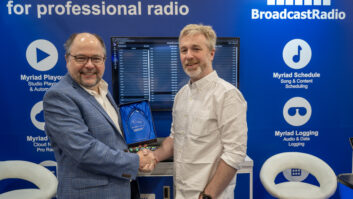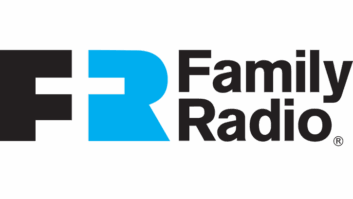
FMeXtra encoder
LAREDO, Texas It might be the best-kept secret in radio.
An FM station can add several additional digital audio channels with no FCC permission or notification, no change to the current transmitter or antenna, no license fees and no digital hash on adjacent channels. It is called FMeXtra and it’s from a company called VuCast, formerly Digital Radio Express.
The number of audio channels that you can have depends on the encoding that you use and the bit rate for voice or music quality. With a mono FM station, a large number of channels is possible. The available spectrum will be limited if you are using an analog SCA or metering return for your transmitter remote control. In that case, the unused part of the subcarrier spectrum can be used for FMeXtra, which can also be programmed to protect RDS.
Since FMeXtra operates within the station’s channel, it can be used in most countries without government approval. Standard radios will not play the FMeXtra signal, requiring a special radio. (But HD Radio also requires a special radio as well.)
Putting it to use
I recently acquired and tested an FMeXtra system, then sent it to our World Radio Network station KBNL(FM) in Laredo, Texas, where it was installed by WRN engineer Jimmy Stinson.
KBNL is a 100 kW Spanish Christian station owned by World Radio Network, with headquarters in McAllen, Texas. Arturo Lozano, the station manager, uses the four FMeXtra channels for English and Spanish music and teaching programming. RDS is also occupying its own carrier, thus consuming more bandwidth.
The FMeXtra X1 encoder was programmed for us by Energy-Onix, which is a dealer for VuCast. The encoder is computer-based so it can be reprogrammed with a monitor, keyboard and mouse. Lyle Henry, a consultant known as the Radio Doctor, has done many FMeXtra installations and can give you more programming information.
The encoder requires a digital signal for input, and is normally set for 32 kHz sampling frequency. We used two inexpensive Behringer Ultramatch Pro SRC2496s as A/D converters. Although these are labeled as L and R inputs, the encoder is programmed to use them as separate mono inputs. However, the Behringer and the X1 encoder can be programmed for stereo, if desired. The Behringer front panel has LEDs that show the audio level. The supplied Marian cable includes four XLR connectors that connect between the Behringer and a DB9 connector on the X1 encoder. The output of the encoder connects to an SCA input on the STL transmitter and the only connection at the transmitter is the composite output of the STL receiver to the composite input of the Harris FM-25K transmitter.
Since FMeXtra operates above the audio spectrum, up to 99 kHz, the only requirement is that the STL and transmitter have flat response to 99 kHz. Many STLs, particularly older ones, have filters in the transmitter or receiver. We replaced an old STL with an Energy-Onix STL-1.

Aruba receiver The encoder can provide either aacPlus (HE-AAC) or AMR-WB+ encoding. The latter is superior to aacPlus at low bit rates. We are using AMR-WB+ on all four channels. A filter can be programmed in order to use RDS.
We have not done listening range tests, but others have indicated that reception extends at least to the limits of the stereo signal, often to the 50 dBu and even 45 dBu contours when driving out from an FMeXtra station. This depends on terrain and co-channel interference, of course. It handles light to moderate multipath well.
The Aruba FM receiver, made by VuCast, is an excellent receiver and sounds great. There is no crosstalk between channels. It has a display that shows the number of FMeXtra channels that the station has. By tuning up in frequency, the display shows the number of the FMeXtra channel that has been selected. Also, a green LED indicates that the receiver has been tuned to a station that has FMeXtra. The receiver has an F connector for an external antenna, a stereo headphone connector, as well as optical, USB, line in and line out connectors. An SD card slot permits easy firmware updates. I understand that a less-expensive radio will be available in the future.
The bottom line: FMeXtra does more than HD Radio at a fraction of the cost.
Stanley Swanson is an engineer with KYRM(FM).
For information, contact VuCast in California at (650) 521-0179 or visitvucast.com.







